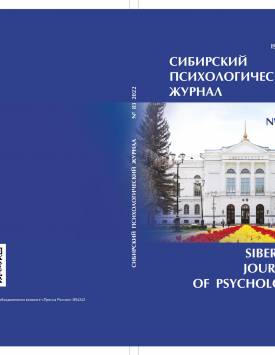Daily Activities of Adolescents in Mixed Reality: User Activity and Multitasking
This paper explores, through the diary method, the daily activities of adolescents in offline, online, and mixed reality. Particular attention is paid to two new formats of activity: Internet user activity, including hyperconnectivity, and media multitasking, which attract more and more attention from researchers. These types of activities are not only important features of digital socialization, but they also determine a person's transition to a mixed reality. The study involves 125 adolescents aged 14-18 years. In the first stage, the study was conducted on the base of an online service Google Forms, in the second stage we used a chatbot in Telegram. The results confirm the data about the high level of adolescents' user activity. Adolescents show significant underestimation of their level of user activity - on average, up to a third of the time they estimate. A change in the image of the world is noted: more than a third of adolescents participating in the study feel that they are living in a mixed reality. At the same time, this image is typical for adolescents with higher user activity, primarily hyperconnected adolescents. The vast majority of adolescents subjectively define themselves as multitaskers, and they appreciate their effectiveness in this format quite highly. Combination of different types of activity turns out to be representative for adolescents with higher user activity, especially for hyperconnected adolescents who use multitasking format more intensively. The dynamics of its use are revealed: in comparison with the peak of multitasking activity on weekdays, when adolescents combine studying with searching for additional information and other educational activities, as well as socializing, there is a decrease in multitasking activity at weekends, except for evening hours. In this context, multitasking can be seen as a tool for adapting to the complexity and diversity of the modern world. The nature of the combination of online and offline activities is similar to the combination of online activities: on weekdays in the morning study is combined either with communicative or educational search activities, in the evening adolescents combine the performance of everyday activities with communicative, entertaining or educational search activities online. Thus, high user activity and multitasking are among the attributes of a mixed reality resident, and digital activity does not replace habitual age-specific social practices, but complements and probably enhances opportunities to fulfill adolescents' needs, primarily in communication and cognitive activities.
Keywords
daily activities, multitasking, media multitasking, user activity, mixed reality, adolescents, diaryAuthors
| Name | Organization | |
| Soldatova Galina U. | Lomonosov Moscow State University | soldatova.galina@gmail.com |
| Chigarkova Svetlana V. | Lomonosov Moscow State University | chigars@gmail.com |
| Koshevaya Anastasia G. | Lomonosov Moscow State University | koshag@inbox.ru |
| Nikonova Evgenia Yu. | Lomonosov Moscow State University | eniconova@mail.ru |
References

Daily Activities of Adolescents in Mixed Reality: User Activity and Multitasking | Sibirskiy Psikhologicheskiy Zhurnal – Siberian Journal of Psychology. 2022. № 83. DOI: 10.17223/17267080/83/2
